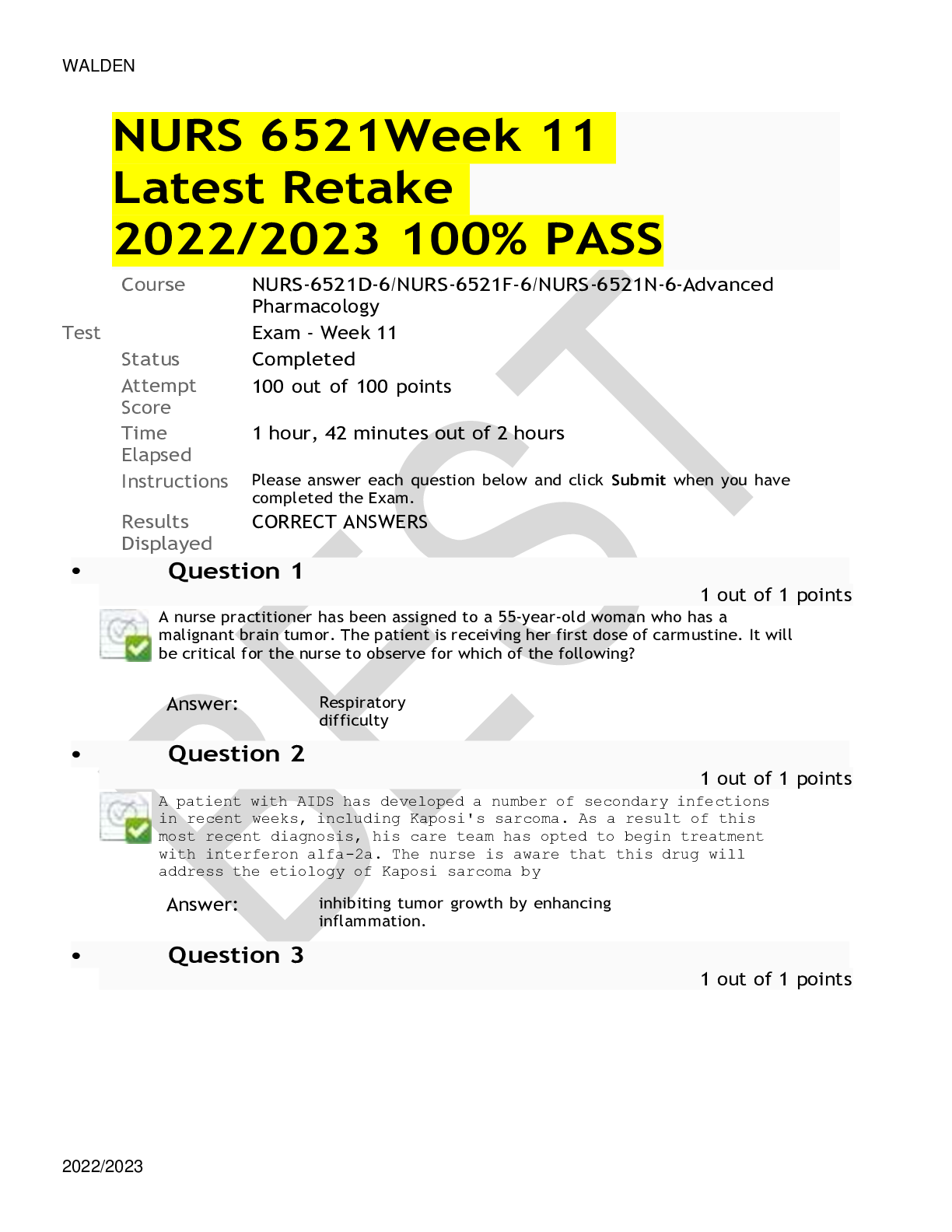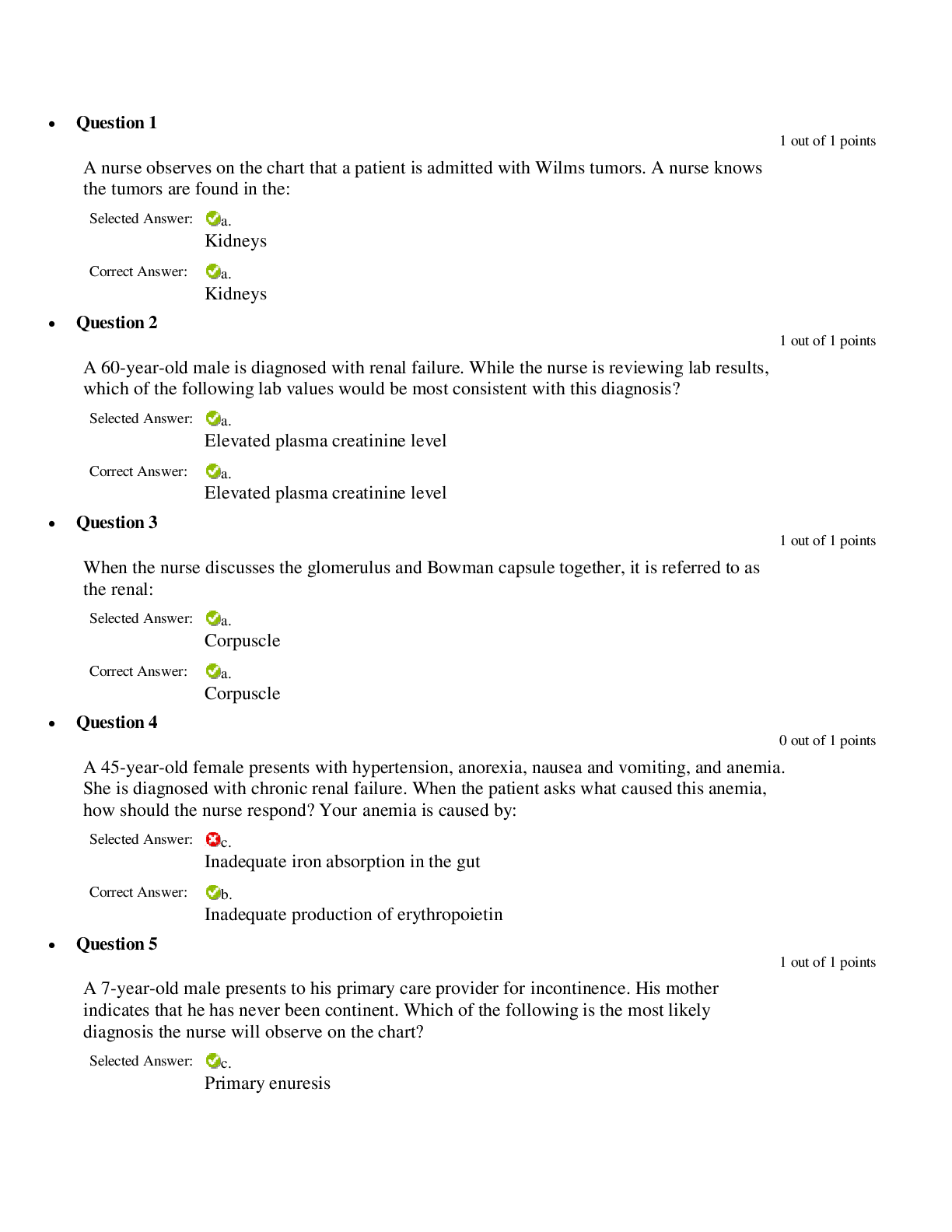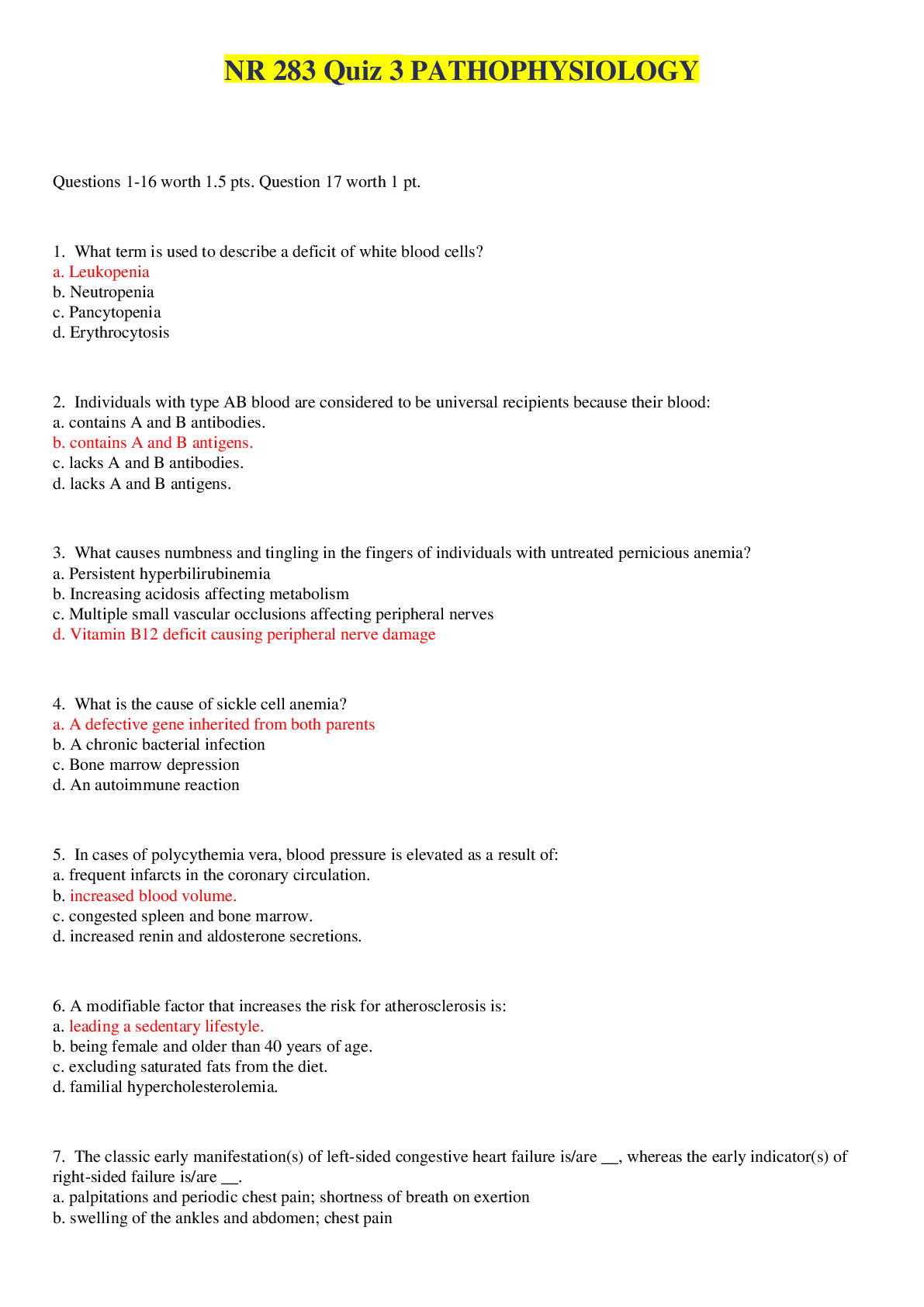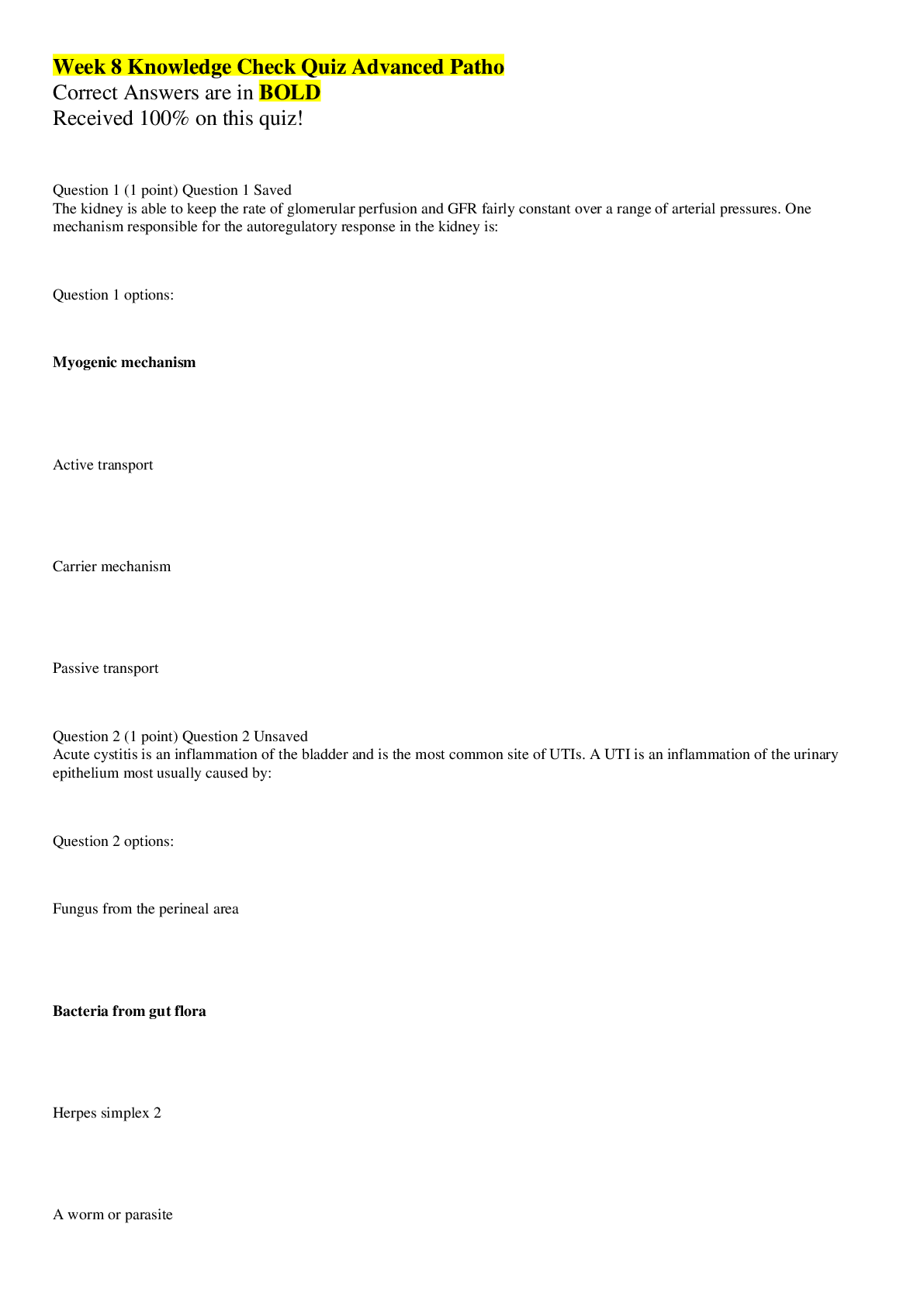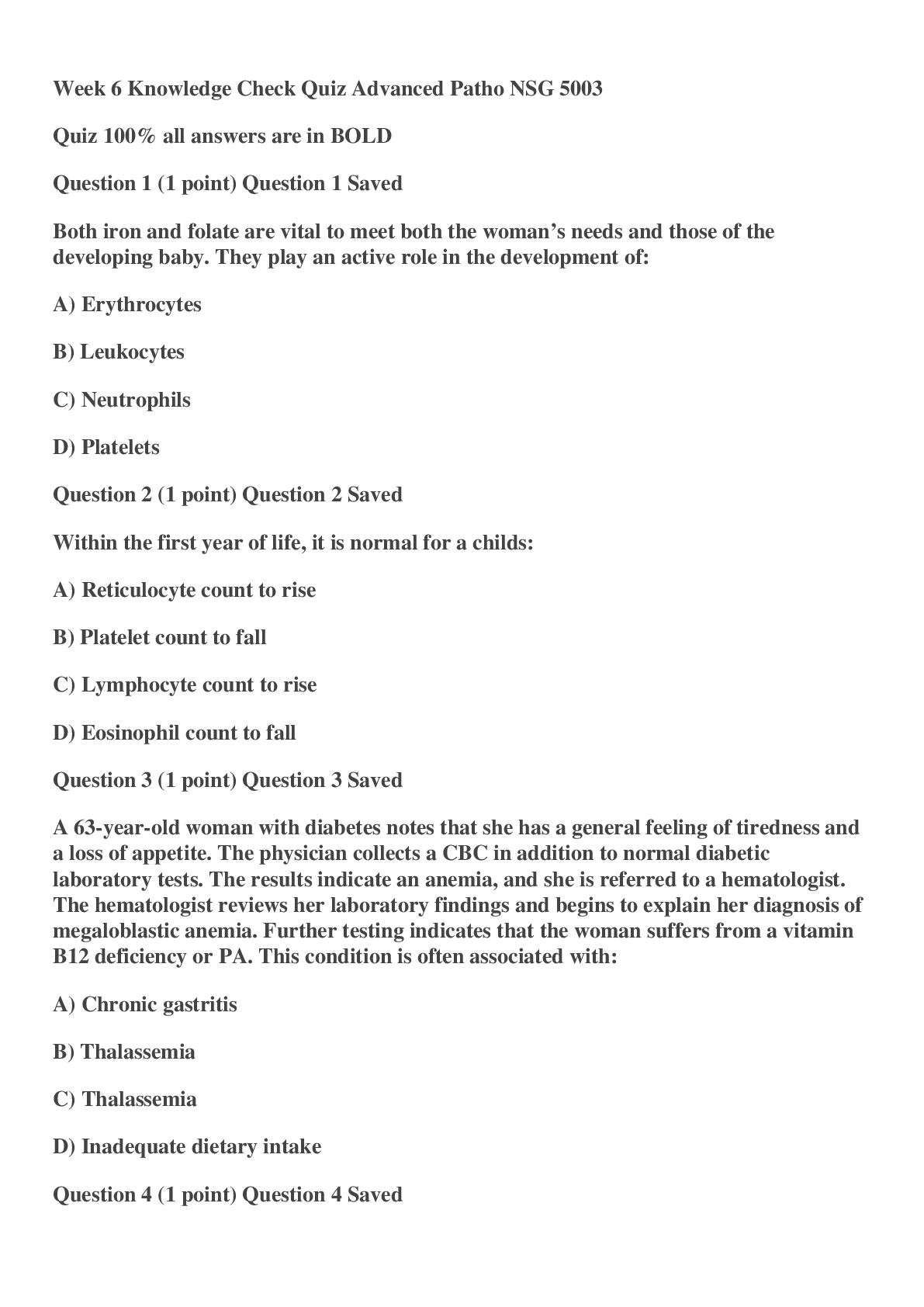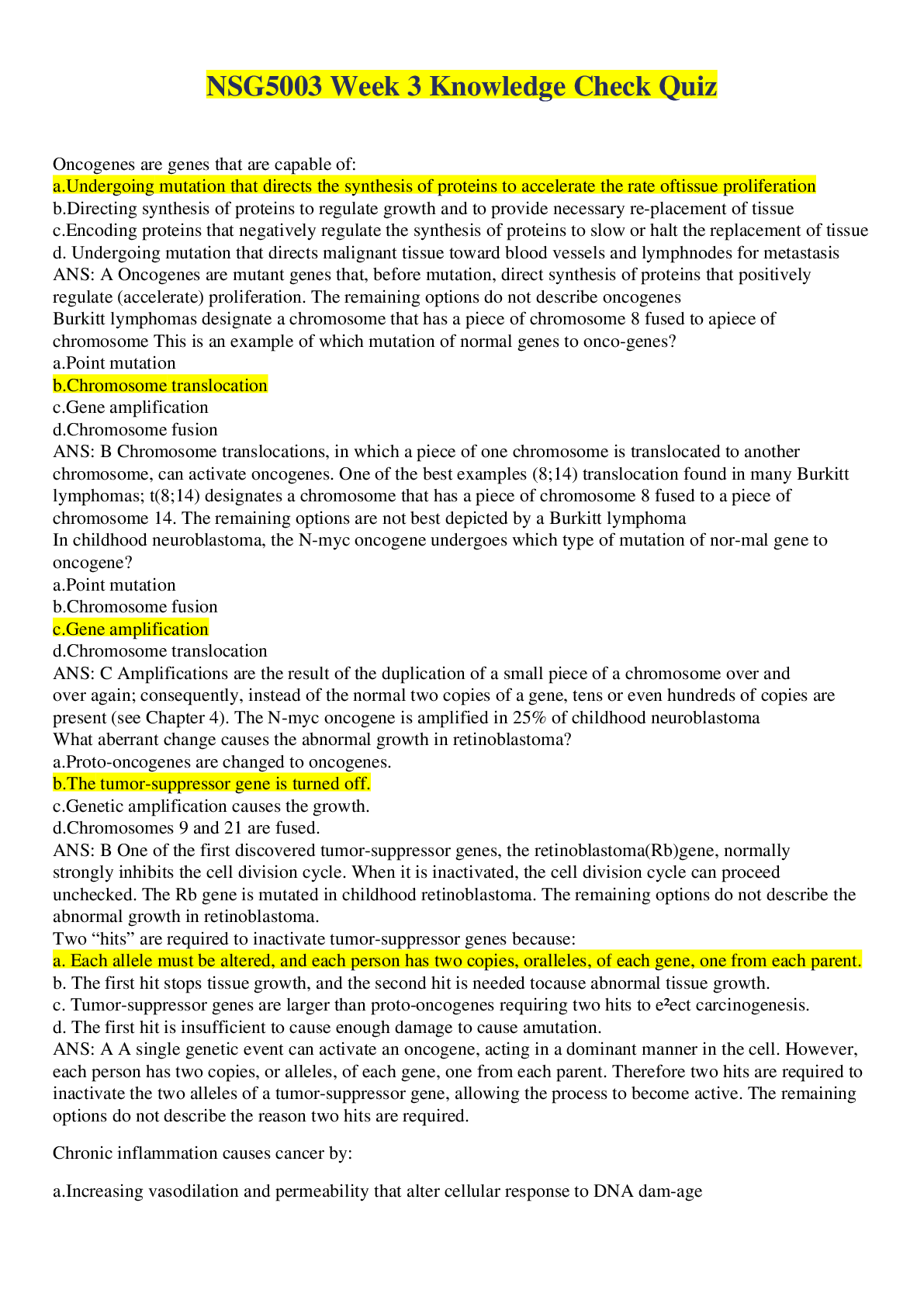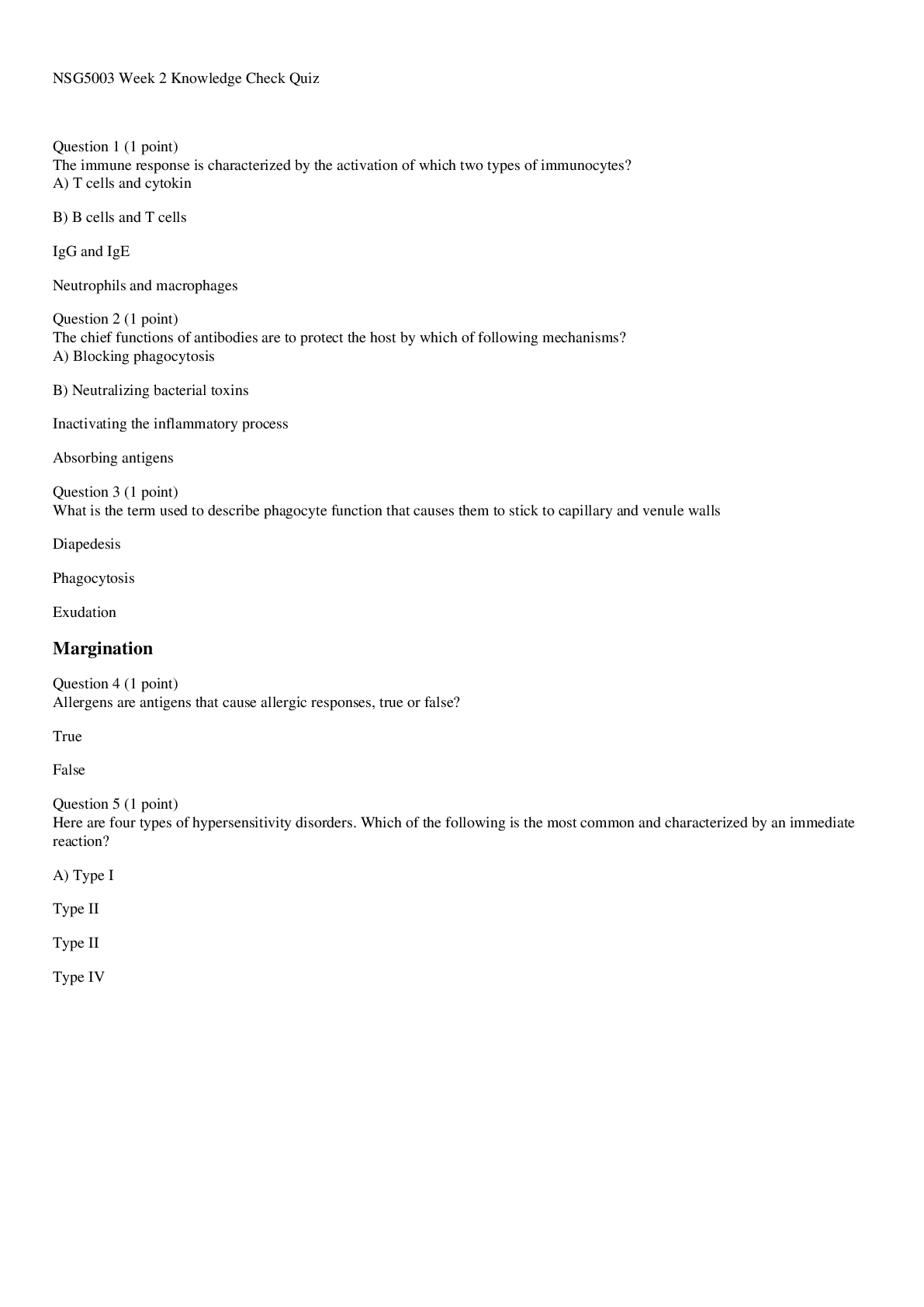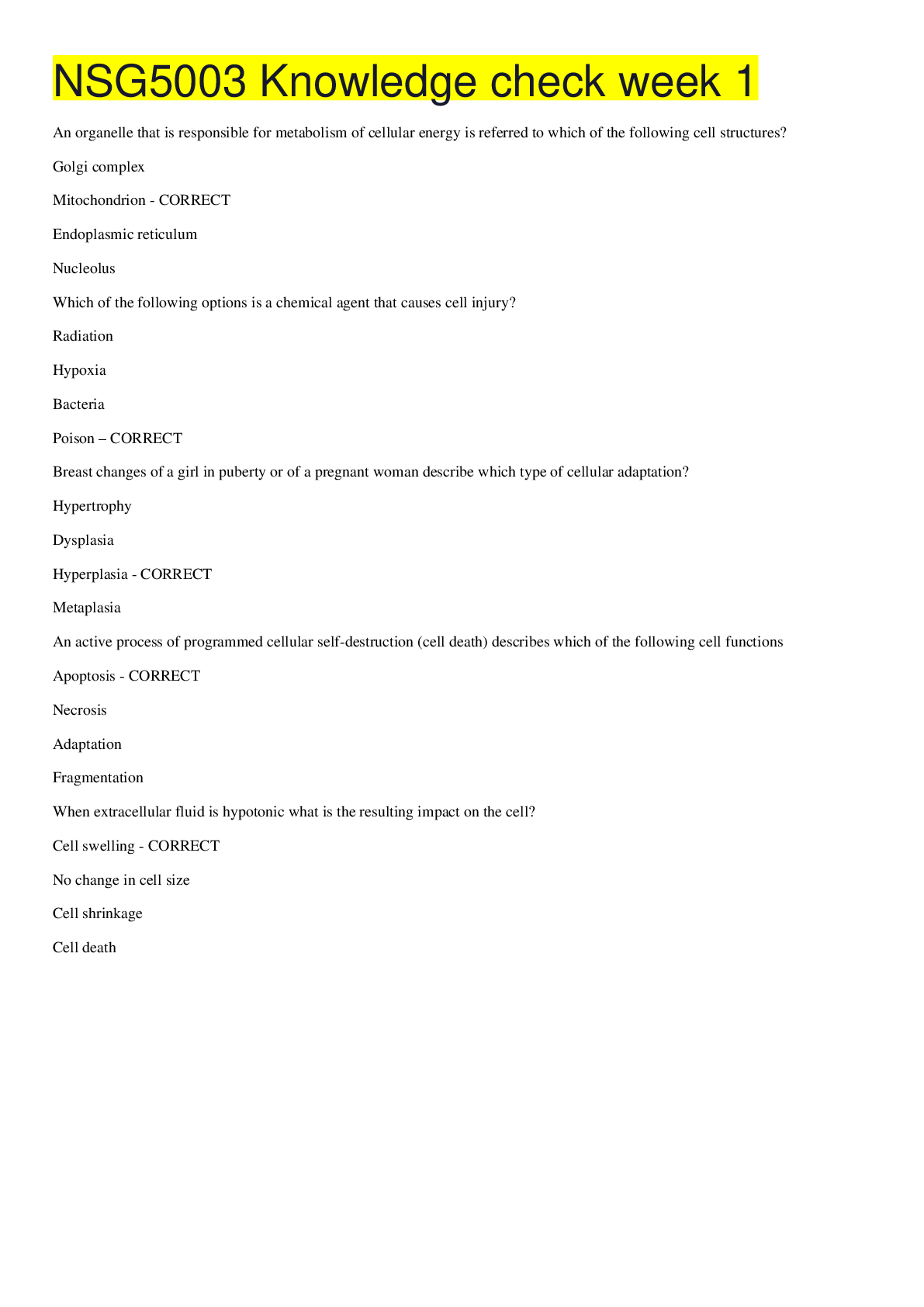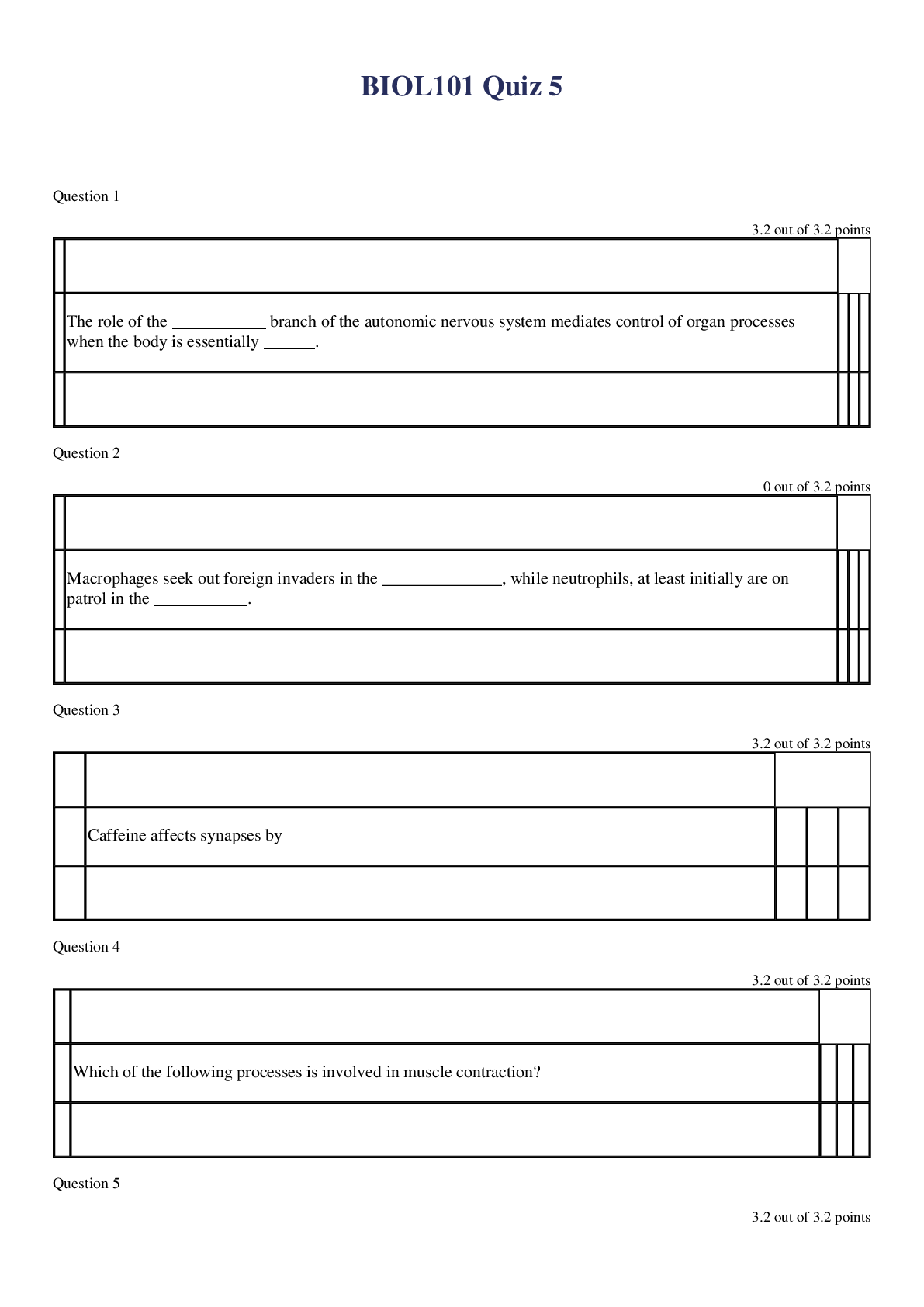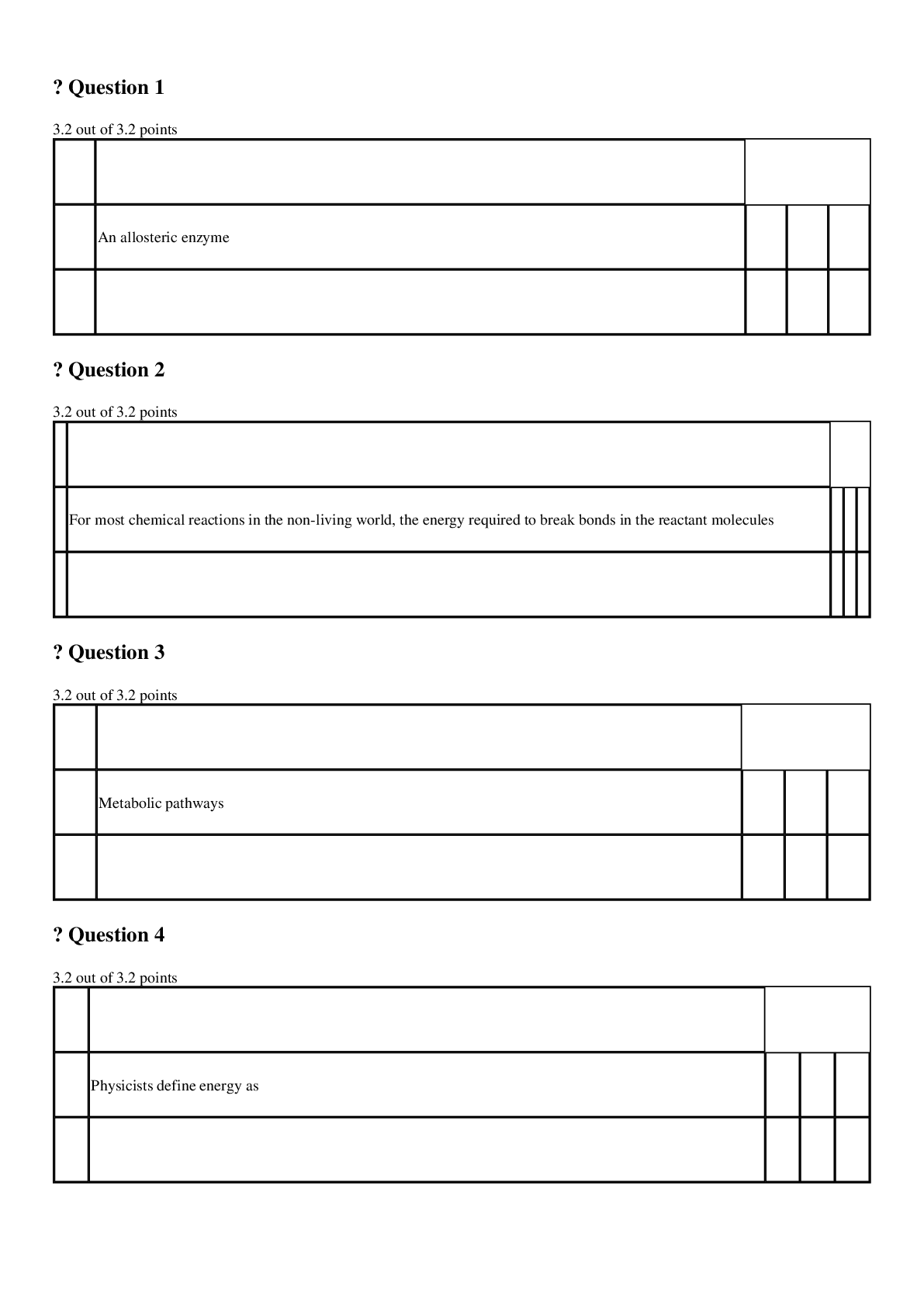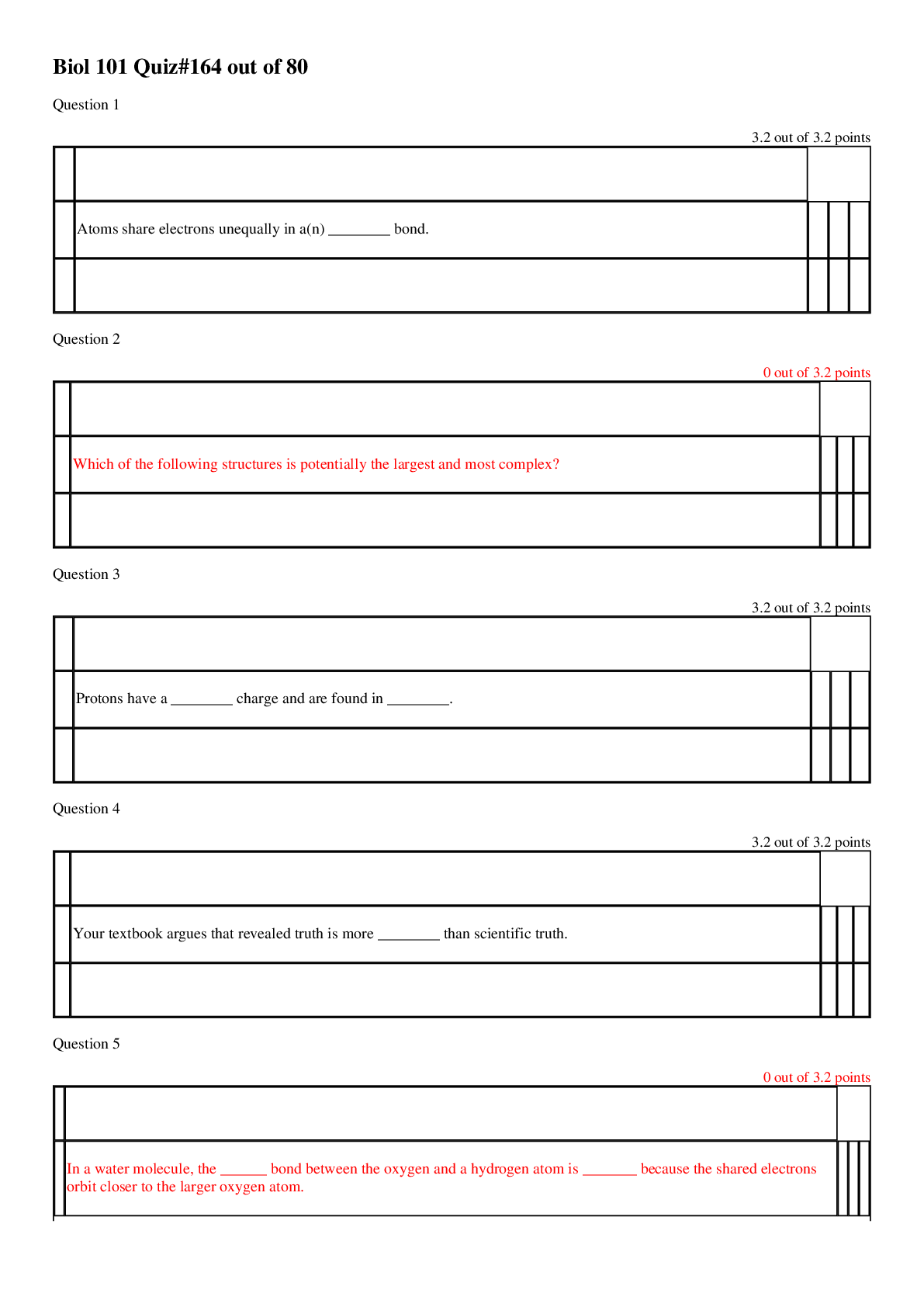*NURSING > EXAM > NSG 5000 Quiz 3 / NSG5000 Quiz 3 (latest, 2020): South University (Verified Answers by GOLD rated Ex (All)
NSG 5000 Quiz 3 / NSG5000 Quiz 3 (latest, 2020): South University (Verified Answers by GOLD rated Expert, Download to Score A)
Document Content and Description Below
NSG 5000 Quiz 3 / NSG5000 Quiz 3: South University 1. A nurse practitioner (NP) knows that she is HIV positive. She is employed in a private clinic and performs wellness exams on ambulatory adults. Th... e NP: a. Is obligated to inform her employer of her HIV status. b. Is obligated to inform her patients of her HIV status. c. Is under no obligation to inform anyone. d. Is under obligation to inform the patient if she performs invasive procedures. 2. Anne and Laura work as NP partners in an NP practice. Anne learns that Laura frequently changes patient’s narcotic prescriptions to a different dosage, and then requests that the patient give her the remaining narcotic medications. Some patients have called Anne aside to tell her of this. How can Laura’s actions best be characterized? a. Laura is committing theft. b. Laura’s behavior is not illegal but is unethical. c. Requesting the patient’s medication is within Laura’s scope of practice. d. This appears to be diversion of medications by Laura. 3. A liability policy that pays claims only during the period that the policy is active is termed: a. claims made policy. b. tail coverage. c. liability protection. d. bobtail coverage. 4. A NP examined a patient who had been bitten by her husband during an assault. There were numerous bite marks and lacerations on the patient’s forearms. The nurse practitioner sutured the lacerations, though this was contraindicated because of the highly infectious nature of human bites. The patient suffered no ill effects after suturing. How can this be described? a. This is negligence. b. This was a fortunate situation for the patient. c. This is malpractice. d. This is poor judgment and malpractice. 5. Concrete strategies used to keep the client’s attention as the NP institutes client education include a. providing the education session immediately after lunch. b. going over the materials more than once. c. translating theoretical information into practical terms. d. using repetition. 6. According to the health belief model, motivation, or readiness to act, is determined by which of the following components a. perceived threat, efficacy, benefits of action, and perceived barriers to action b. education and positive reinforcement c. predisposing factors, reinforcing factors, and enabling factors. d. self-efficacy theory and perceived ability to act 7. Which is the best method for evaluating the efficacy of a new clinical intervention? a. A case report b. A descriptive study c. A randomized, controlled clinical trial d. A correlational study 8. As an APRN, you begin a new job in a small practice with two other physicians. You have been hired to be a partner in the practice, but the eldest partner is reluctant to allow you to take on new clients. This is an example of a. role stress b. role strain c. role insufficiency. d. role conflict. 8. Which of the following statements is true about case management? Case Management a. oversees the client throughout acute care hospitalization. b. is organized around a system of interdisciplinary resources and services. c. depends on physician-driven leadership to oversee the illness episode. d. is applicable to the rehabilitative portion of the episode of the illness. 9. Usual and customary refers to a. an insurance term for how a charge compares with charges made to another person receiving similar services and supplies. b. How an insurer evaluates the need for an ordered diagnostic test. c. A comparison of interventions across populations. d. How much an insurer will charge to provide coverage? 10. Reviewing the literature refers to the ability to research existing literature about a specific problem, whether clinical or policy. The most important skill necessary to performing a thorough review of the literature is a. talking with colleagues about the sources. b. attending a research conference. c. critiquing the findings and synthesizing the results. d. reviewing clinical journals. [Show More]
Last updated: 1 year ago
Preview 1 out of 5 pages
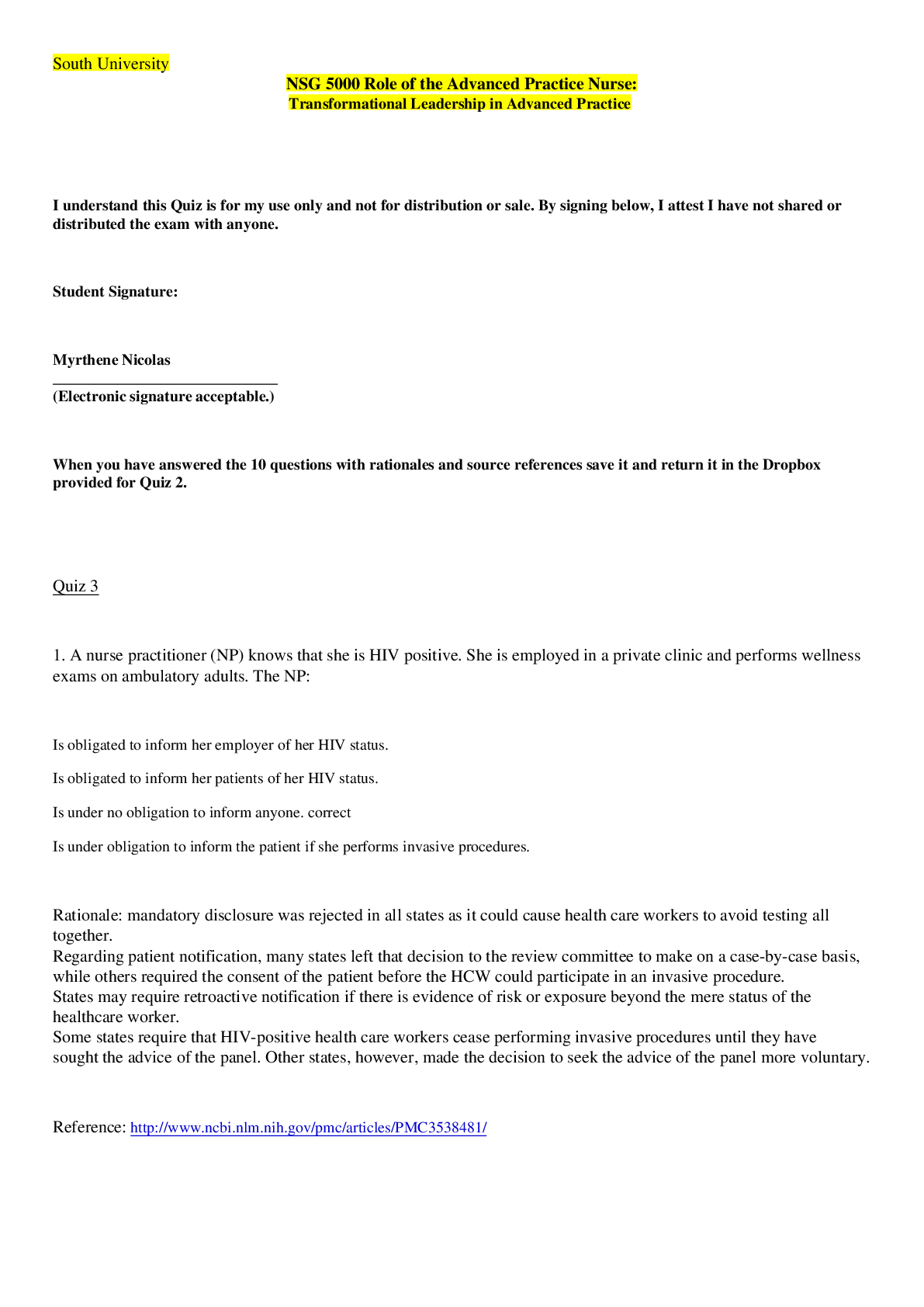
Reviews( 0 )
Document information
Connected school, study & course
About the document
Uploaded On
May 02, 2020
Number of pages
5
Written in
Additional information
This document has been written for:
Uploaded
May 02, 2020
Downloads
0
Views
43


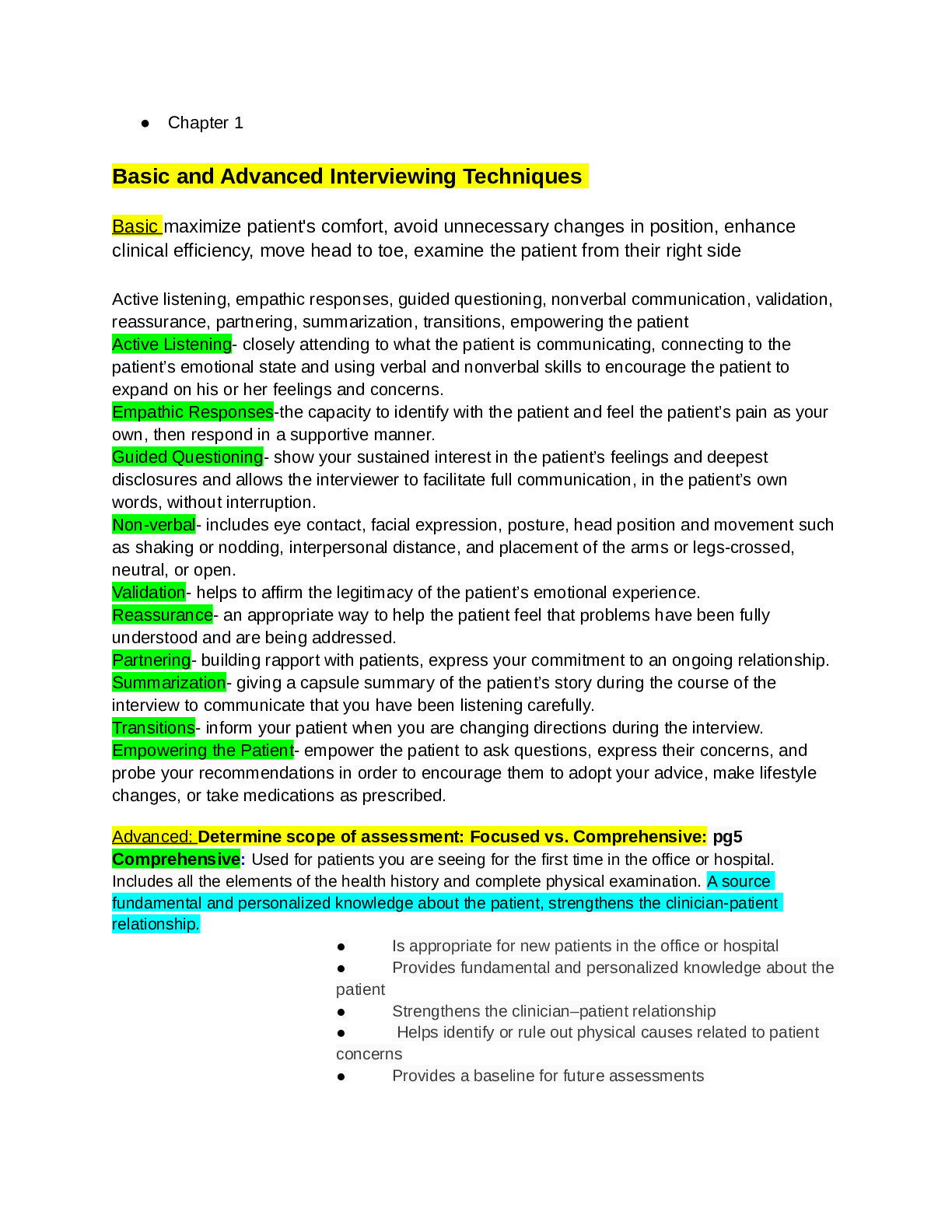
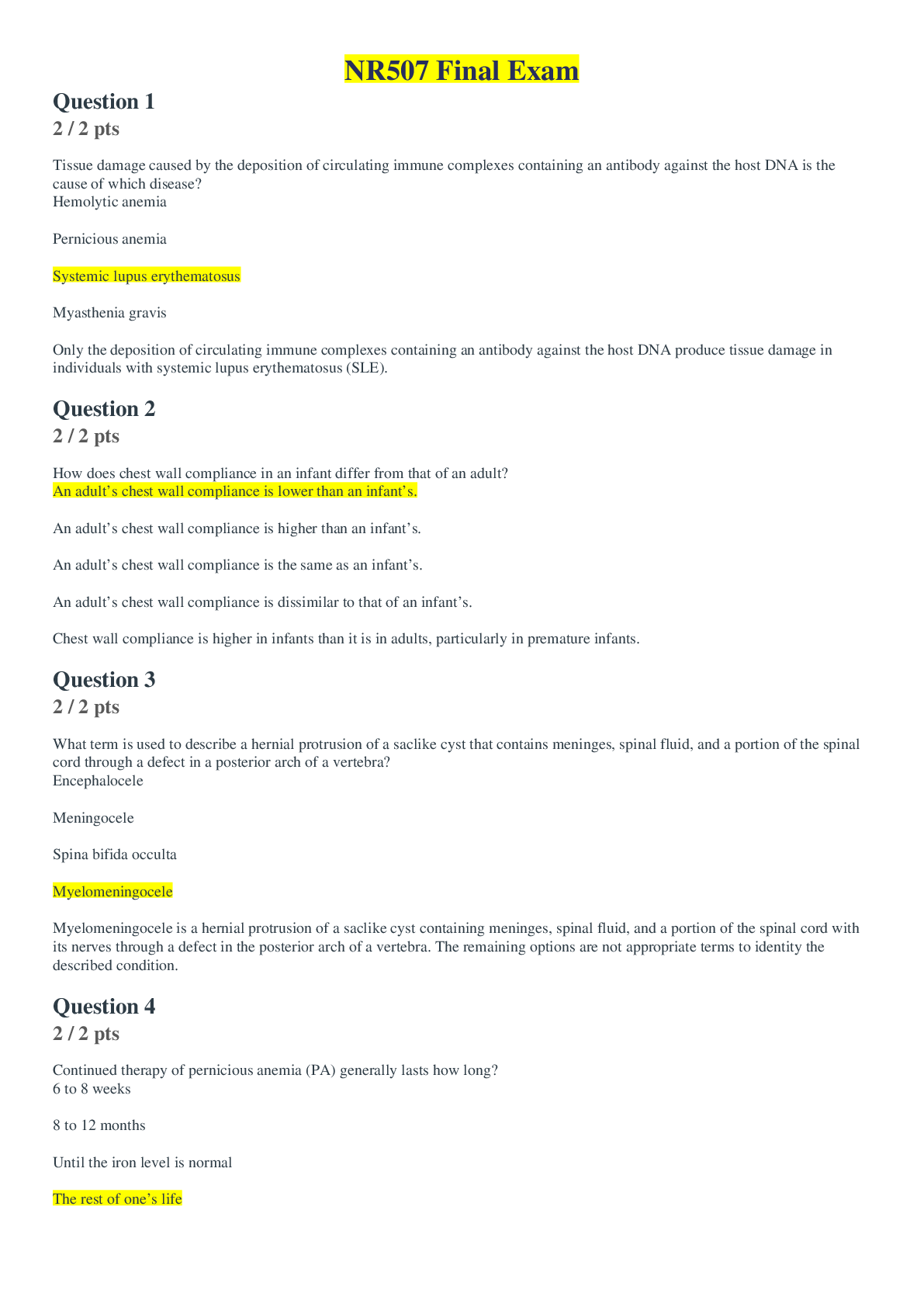

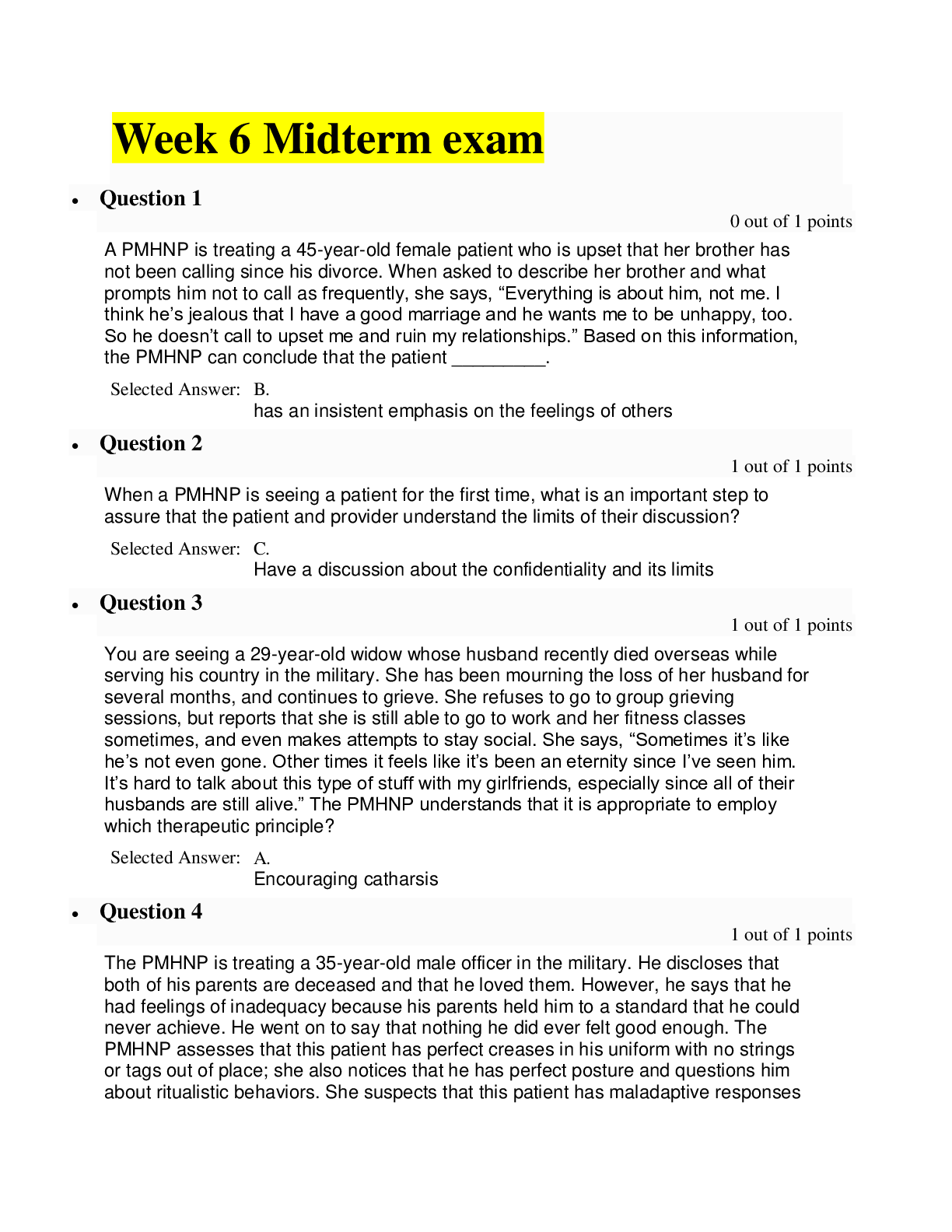

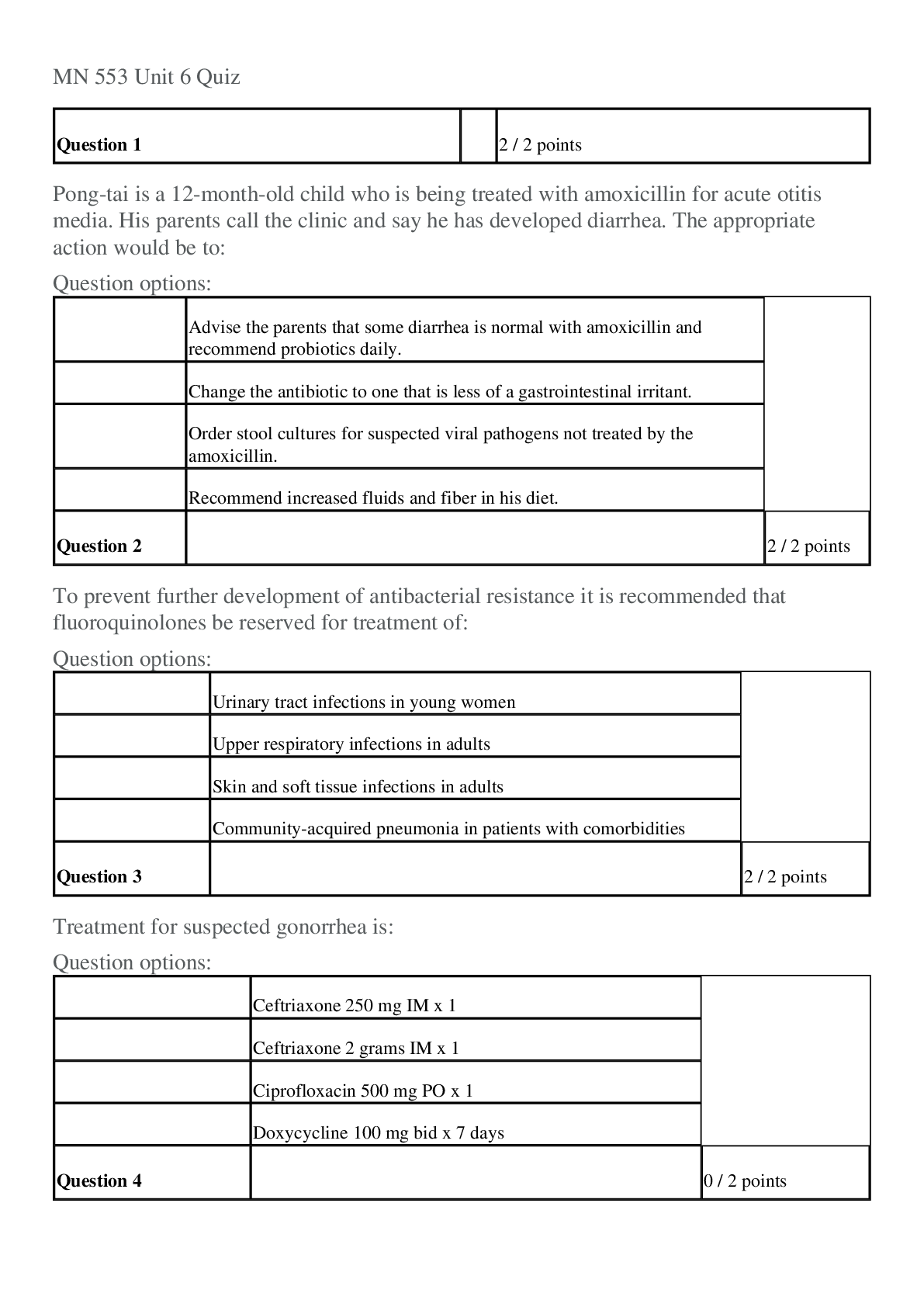


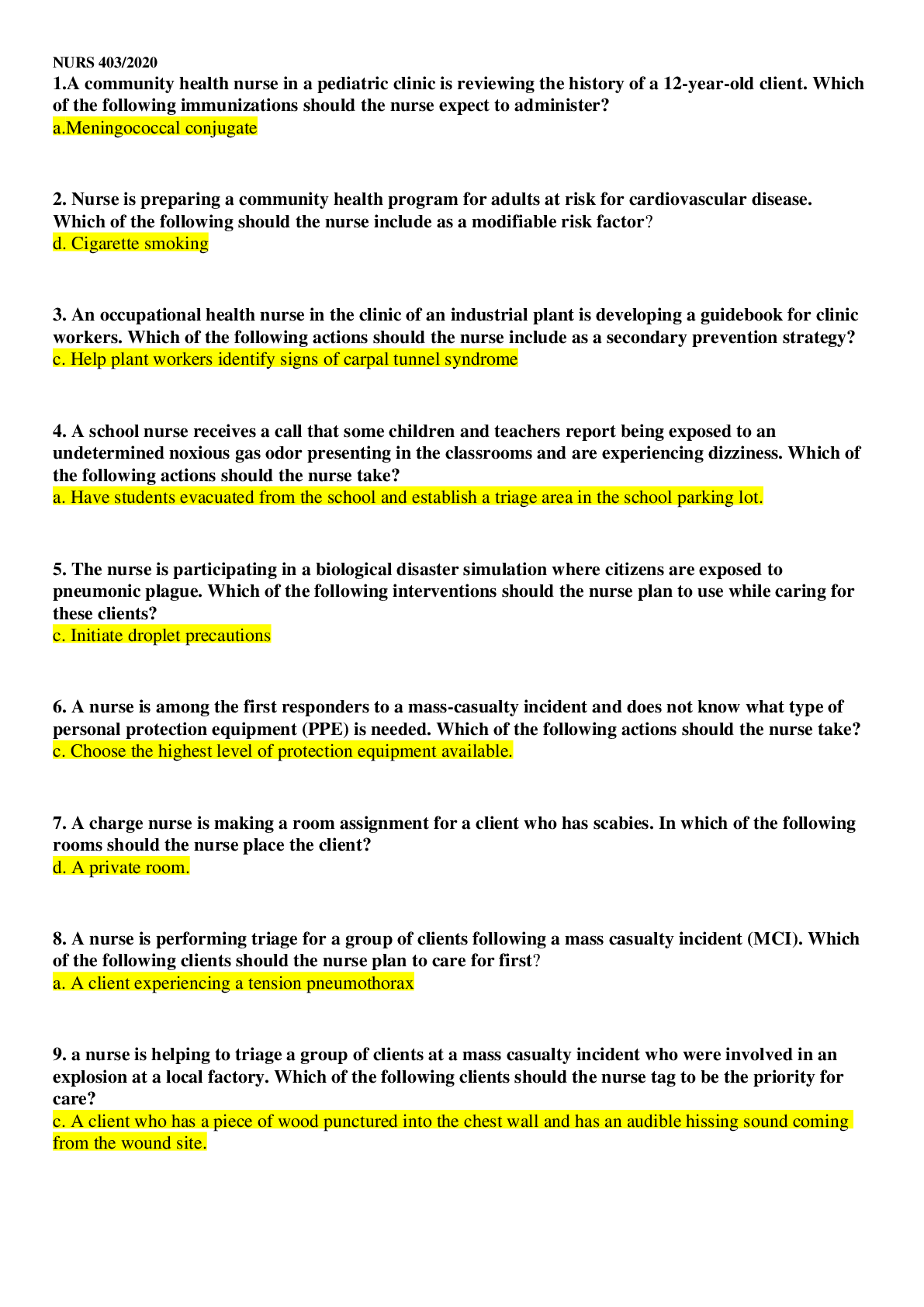

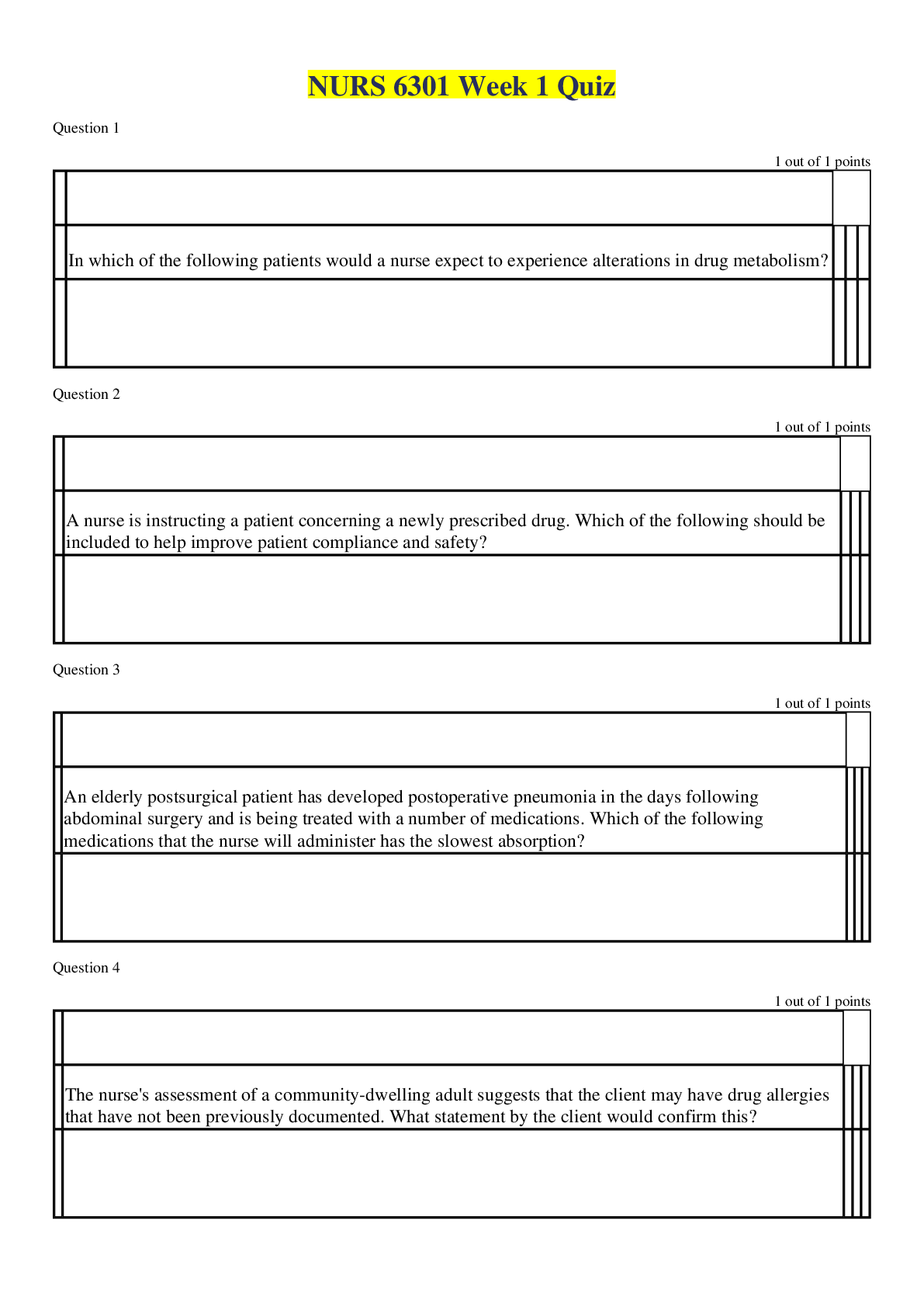
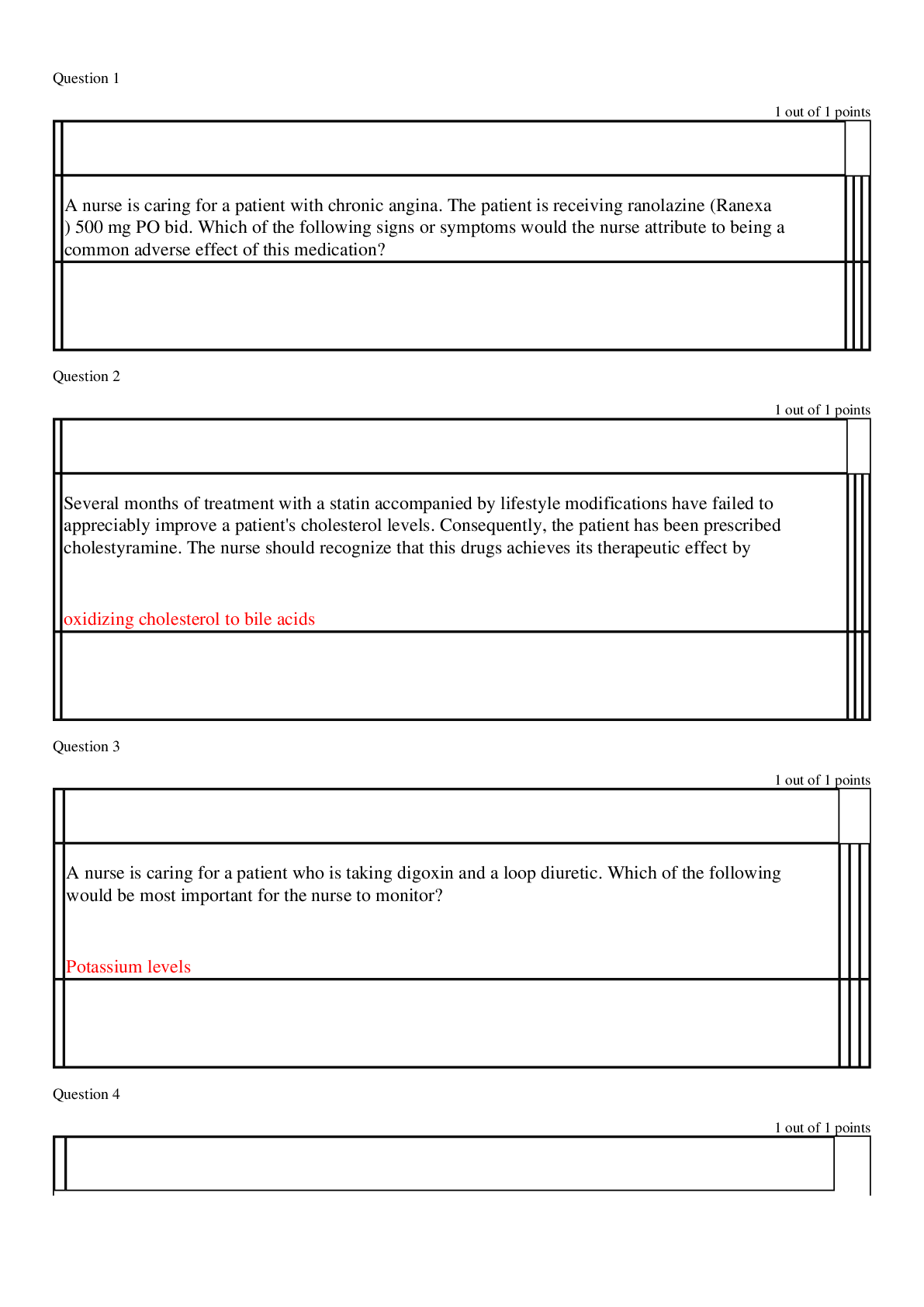

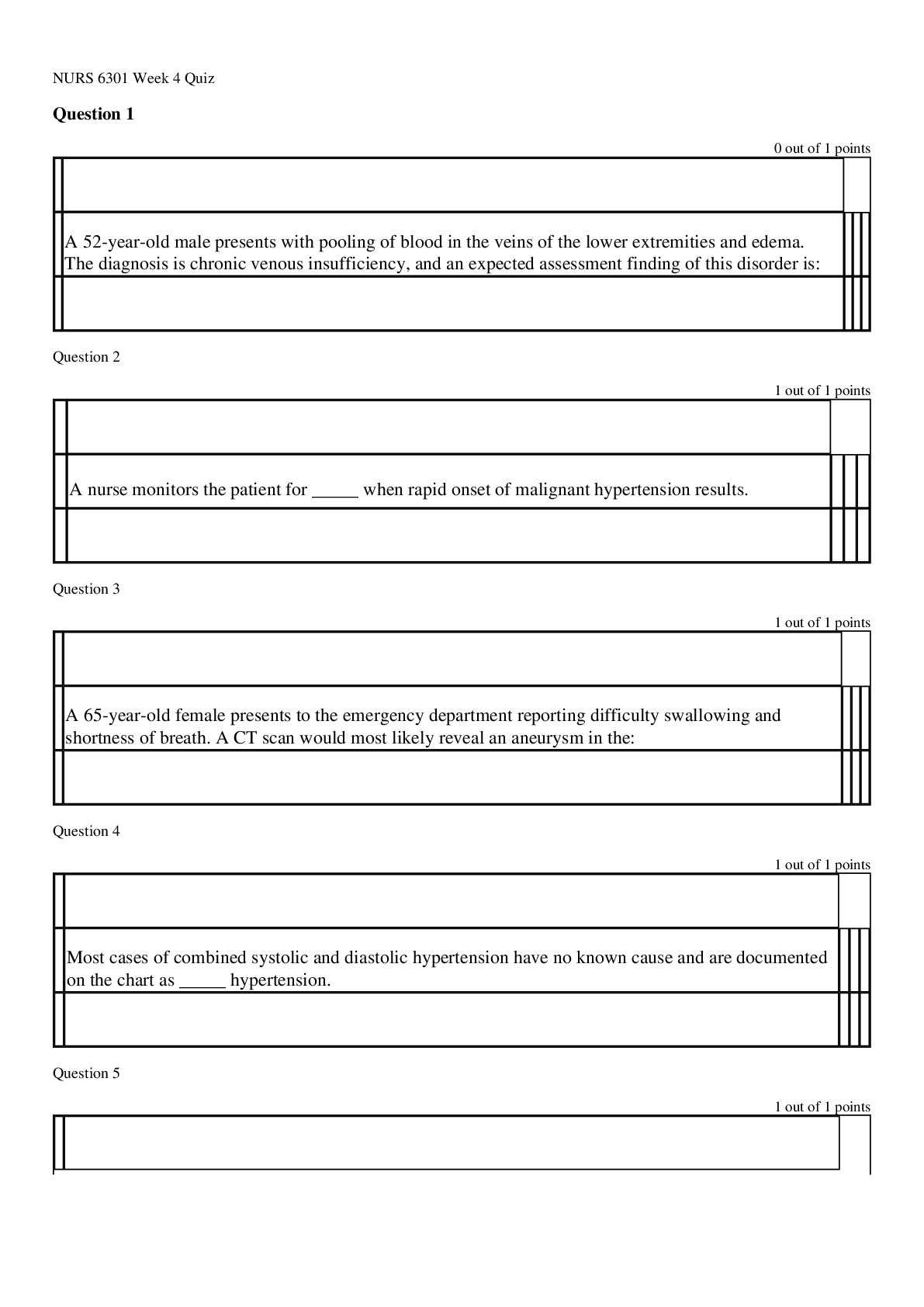
.png)

